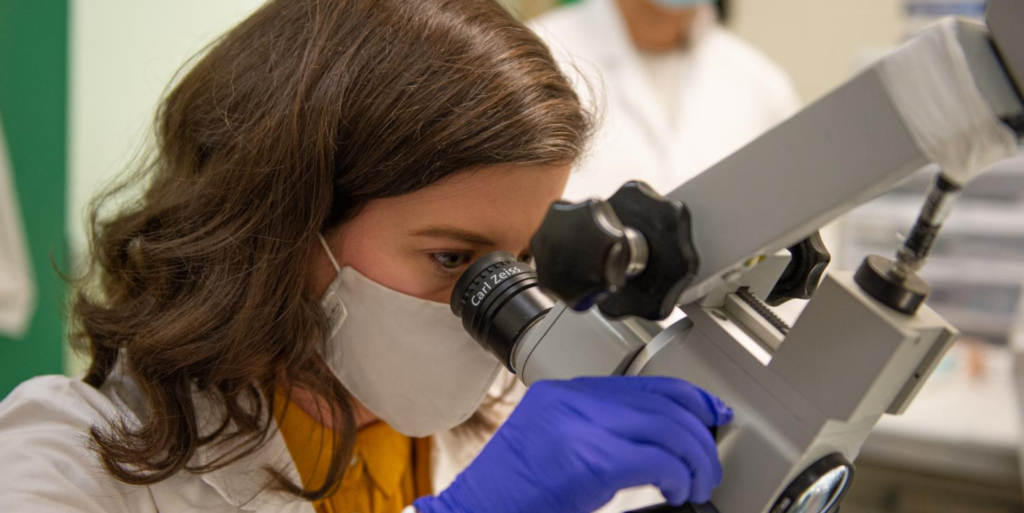When it comes to recruitment, the life sciences industry is undoubtedly highly competitive. With demand for skilled professionals often outpacing the supply, attracting (and retaining) qualified candidates with the right expertise can be a significant challenge for many life science companies.
From nurturing a positive work culture to empowering and developing your people for success, we’ve set out some top tips for building a high-performance life science team as a life science company.
1. Invest in Graduate Programmes
Investing in graduate outreach can help to bridge the skills gap in life sciences, and collaborations with universities and colleges have proven an effective means for many organisations to foster a pipeline of qualified candidates. A carefully constructed graduate outreach strategy can deliver repeat return on investment, with the added benefit of giving your employer brand a boost.
2. Consider Your Employee Benefits Offering
Having an employee benefits package that caters to what’s important to your life science team is one of the best ways of attracting top talent.
All employees have the legal right to request flexible working, and it regularly tops the list of desirable employee benefits. For life science organisations, while it may be difficult to offer home-working for scientists based in the lab, being flexible on start and finish times might be an option to help employees achieve a better work-life balance.
3. Upskill Current Employees
Upskilling your current workforce can help to overcome any skill shortages. If you haven’t already, consider investing in a learning management system (LMS) to support your efforts in managing, distributing, and tracking employee training. This can also create new career development opportunities for your current employees, improving job satisfaction and retention.
4. Foster a Positive Work Culture

Notably, more than 75% of job seekers consider a company’s culture before applying for a job, and 56% said culture is even more important to them than salary, according to a Glassdoor survey. With more employees seeking meaning and purpose in their work, companies need to build a positive, robust workplace environment.
Workplace culture starts at the top. Leaders in the sector who prioritise work-life balance, a positive attitude, and mutual respect with employees can actively encourage their life science team to feel empowered to do their best work.
5. Communicate Your Vision, Mission and Values
Determining your company’s vision, mission and value statements is the first place to start when trying to foster a positive company culture for your life science team. While the three seem similar, each has a different audience and purpose:
- Vision: For internal company use. Your vision statement should be a broad, aspirational goal that should inspire employees and guide stakeholders. For example, Microsoft’s vision is: “to help people and businesses throughout the world realise their full potential.”
- Mission: For internal and external use. Your mission statement should provide a clear and concise summary of why your company exists and why clients or customers choose you over competitors. Here at Pioneer Group, our mission statement is: “to create, develop and operate places of work that address the bigger picture, by minimising negative environmental impacts while maximising human, societal and planetary health.”
- Values: For external use. Your value statement is a list of the values for which your company stands. These should correlate with the values of your customers or clients. To continue our example, Apple’s core values are: accessibility, education, environment, inclusion and diversity, privacy and supplier responsibility.
Your vision, mission, and values statements will form the foundation for all activities in your company and can be the guideline for decision-making. Targeted statements can therefore offer a sense of shared ownership within the company, enabling employees to work toward a common objective.
Building a network is just the beginning; maintaining and nurturing lasting connections is the real challenge. Communicating regularly with your contacts is essential, providing updates on your work and inquiring about their projects.
6. Develop a diverse life science team
The importance of building a thriving, diverse workplace has been made evident for life science businesses, with research showing that diverse, inclusive teams are not only more innovative, they’re also more engaging and creative.
Having people from a range of different social and ethnic backgrounds and of different genders within your team helps bring a variety of perspectives and experiences to the table. Crucially to the life sciences sector, a diverse team also reflects the diverse patient populations and communities that the industry serves, which can lead to more inclusive and effective research, clinical trials, and healthcare solutions.
Ultimately, promoting diversity in the life sciences is not only a matter of fairness and social justice but also a pathway to more comprehensive and ground-breaking advancements in science and medicine. Earlier this year, BIA launched a first-of-its-kind diversity and inclusion report for UK biotech and life sciences – you can access it here to see the findings.
7. Beware of ‘lopsided’ teams
Having a diverse range of personalities is also important within a team. Managers often fall into the trap of hiring people who are like themselves or fail to adequately recognise the role of the quieter, more supportive players in the team. As a result, teams can end up a little ‘lopsided’ when it comes to skill sets or personality types.
Consider running profile testing such as Myers Briggs – tools like this can guide you in how to manage your life science team better and help to reveal any skill or personality gaps that you may need to address.
8. Be open to feedback
Being able to give and receive constructive criticism and thorough feedback is pivotal in helping your team members grow. Plus, it can proactively prevent issues – you can nip issues in the bud before they grow into serious, fully-fledged problems.
As a business owner or manager, you should also be prepared to receive feedback from your team and remember to be objective and not to take things personally. When both leaders and team members can use feedback to their advantage, they’ll be better equipped to tackle future challenges.
As well as constructive feedback, don’t forget to celebrate people’s wins. Praising your team’s hard work creates an encouraging atmosphere that inspires people to aim even higher.
Does your life science team need a place to call home?
Our office and lab space goes quickly.




